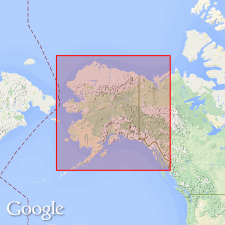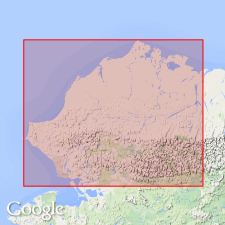
- Usage in publication:
-
- Fickett series*
- Modifications:
-
- Named
- Biostratigraphic dating
- Dominant lithology:
-
- Schist
- Limestone
- Slate
- Quartzite
- Conglomerate
- AAPG geologic province:
-
- Alaska Northern region
Summary:
[Named derived from Fickett River, now known as John River (see Orth, 1967)]. Stratigraphic cross section of mountains in northern AK shows Fickett series occurs in broad trough between two axis of range. Has width or north and south extent of about 50 mi. Composition ranges from chloritic schists or phyllite on the south, through limestone, slate, sandstone, quartzite to hard conglomerate on the north. To the south unconformably overlies Skajit formation (new); to north unit seems to be in fault contact with Stuver series (new) and Lisburne formation (new). To the west unit seems to overlie Lisburne. Contains Carboniferous fossils near base (list identified by Charles Schuchert). Provisionally assigned to early Carboniferous age.
Source: GNU records (USGS DDS-6; Menlo GNULEX).

- Usage in publication:
-
- Fickett series†
- Modifications:
-
- Abandoned
- AAPG geologic province:
-
- Alaska Northern region
Summary:
"Fickett series" of Schrader (1902) is subdivided into three parts of Silurian(?), Devonian, and Mississippian age. The Mississippian part is correlated with Noatak sandstone. [Thus name "Fickett series" is abandoned.]
Source: GNU records (USGS DDS-6; Menlo GNULEX).
For more information, please contact Nancy Stamm, Geologic Names Committee Secretary.
Asterisk (*) indicates published by U.S. Geological Survey authors.
"No current usage" (†) implies that a name has been abandoned or has fallen into disuse. Former usage and, if known, replacement name given in parentheses ( ).
Slash (/) indicates name conflicts with nomenclatural guidelines (CSN, 1933; ACSN, 1961, 1970; NACSN, 1983, 2005, 2021). May be explained within brackets ([ ]).

